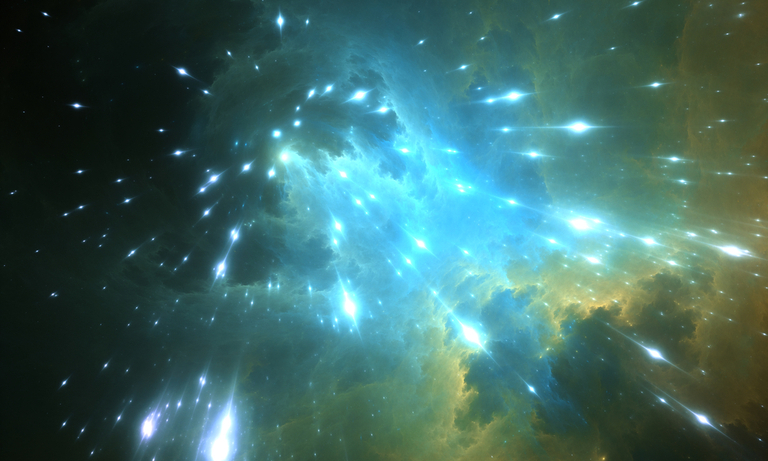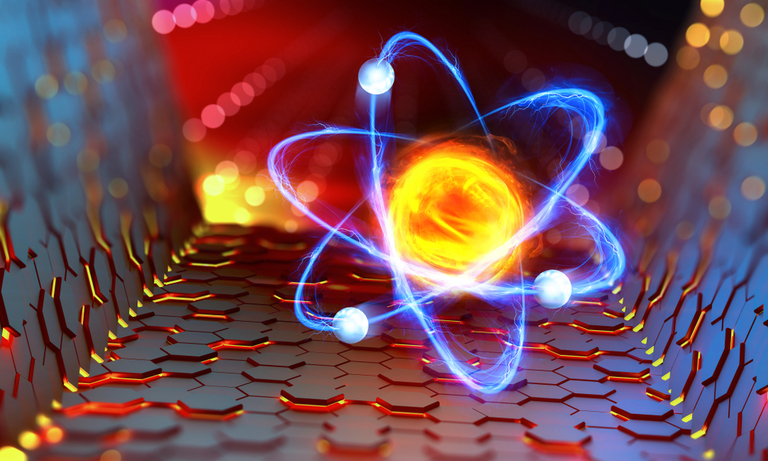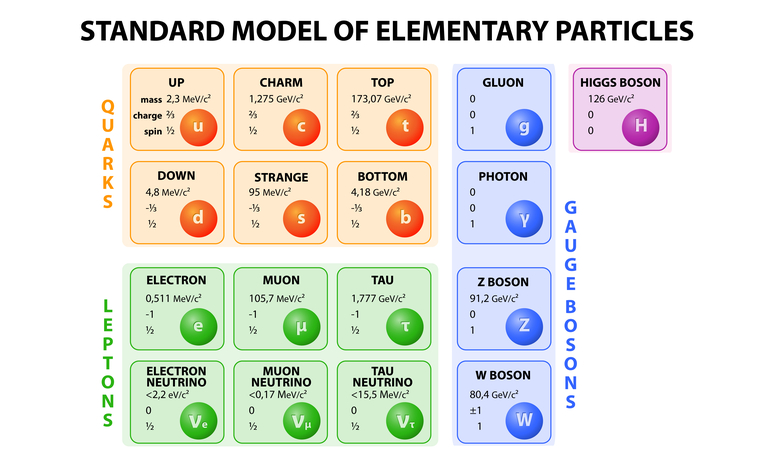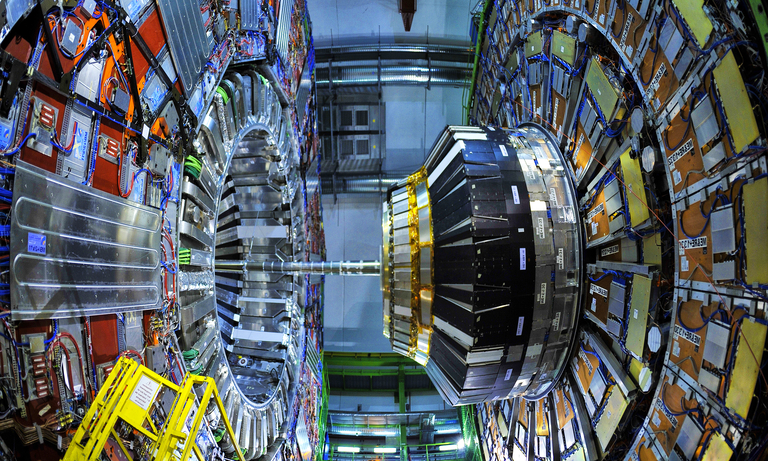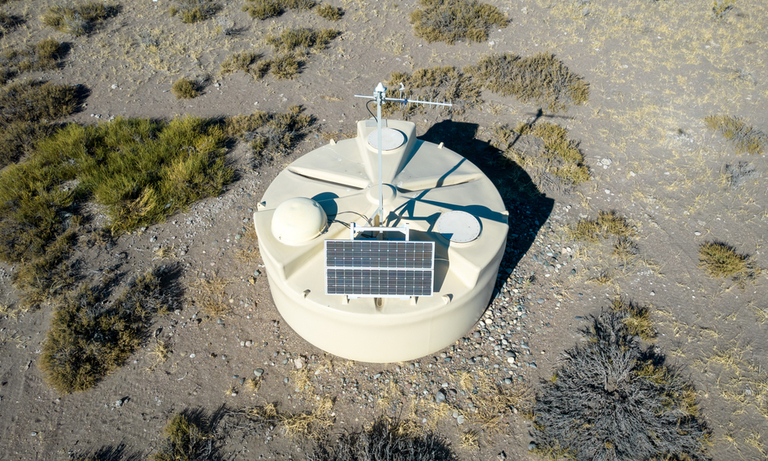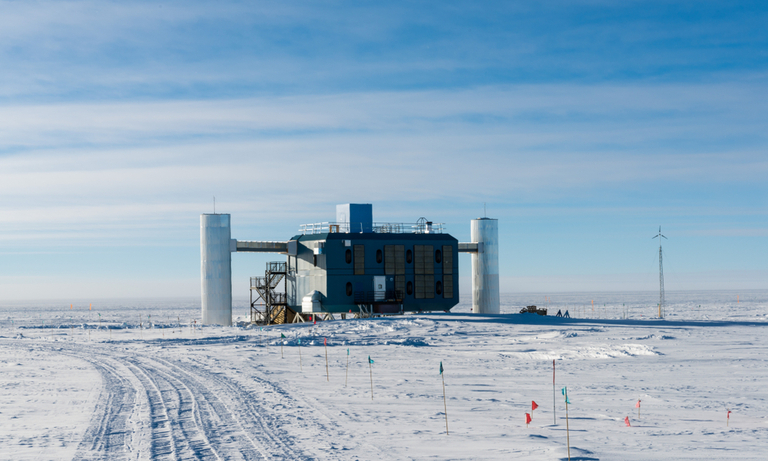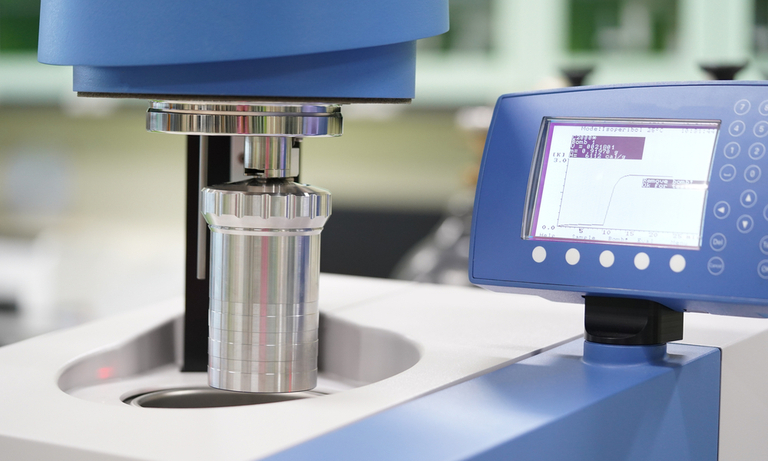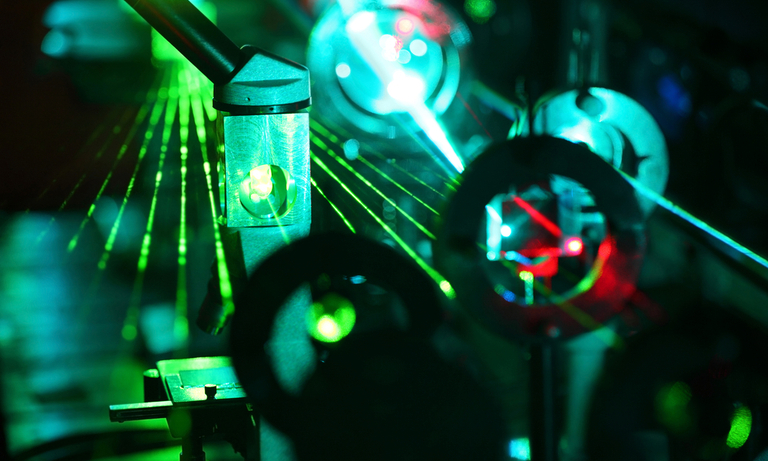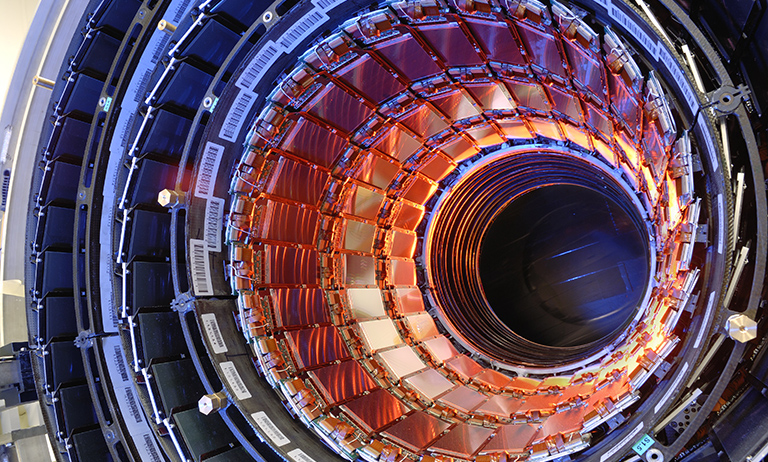Home
Products
Physics Research Field
Type of Experiment
Detector Type
Behind the Science
Tech in a Nutshell
United Kingdom (EN)
Select your region or country.


Liquid Ar and Liquid Xe TPC Chamber
A Time-Projection Chamber (TPC) detector is a type of detector used for particle and nuclear physics. It generally consists of a detection volume of gas or liquid, to which a strong electric field is applied, a position-sensitive electron collector and a read-out system. If a high-energy particle hits the sensitive volume, it will leave a trail of ionized electrons behind its trajectory: the TPC is able to provide a complete, three-dimensional picture of the energy loss of the incident particle, thus enabling its identification.
The use of noble elements in in their liquid phase, especially argon and xenon (LAr and LXe), in the detection volume, is due to their high atomic number and density, which enables the construction of large, but compact and homogenous detectors. Also, noble gasses respond to the passage of radiation with a scintillation signal: among noble gasses, argon and xenon have the highest ionization and scintillation yield. Ionization and scintillation are two complementary and anti-correlated signals; their simultaneous detection can provide a complete and precise reconstruction of the incident particle’s properties.
LAr and LXe TPCs have been used for both accelerator and non-accelerator experiments, such as proton and double-beta decay; neutrinos and dark-matter searches and as imaging detectors.
Hamamatsu Photonics played an important role in the technological advance of this field, especially concerning the development of Vacuum Ultra Violet (VUV) Photomultiplier Tubes (PMTs).
Besides responding to an incident radiation with both the production of charge carriers and scintillation light, argon and xenon have vanishing electronegativity, and therefore the electrons created in the ionization trail of the incident particle will not be re-absorbed while heading to the detector read-out system.
The evolution of the LAr and LXe TPCs detectors field has grown under the aegis of the Imaging Cosmic and Rare Underground Signals (ICARUS) and XENON detectors for LAr and LXe TPCs respectively.
ICARUS is a 760-ton detector composed of two 3.5x3.9x19.9 cubic metres’ modules, filled with liquid argon (LAr). It was employed to study neutrino oscillations at Gran Sasso Laboratories (Italy), using a beam of neutrinos produced at CERN, from 2010 to 2014.
The ICARUS physical operating principle is fairly simple; at the centre of the detector, a uniform electric field is applied through a high-voltage cathode. When an energetic particle passes inside the volume, it will create an ionizing radiation along its track. The electrons thus created will drift towards the sides of the detectors, where there is a read-out system made of three layers of parallel wire planes, oriented at different angles (namely the TPC). Each plane will register the arrival time and the position of the drifted electrons, and together with the drift time they can reconstruct a three-dimensional image of the event.
The drift time can be determined knowing the ionization time of the particle: this is given by PMTs positioned behind the wire planes that almost instantaneously detect the scintillation light produced by the particle passing through the detector.
The simultaneous detection of ionization and scintillation signals allows the identification of primary particle interacting in the liquid.
The XENON dark matter project comprises a series of progressively bigger and more sensitive LXe dual-phase TPC named XENON10, XENON100 and XENON1T, where the numbers refer to the fiducial target Xe mass in kg.
In a dual-phase TPC chamber, a region of gaseous xenon resides above the usual liquid phase. The incident particle will produce an ionization and scintillation signal. The scintillation light will be detected mainly by the PMTs located in the liquid phase. Ionization electrons drift up through the detector volume and are accelerated into the gaseous region near the top of the cryostat by a strong electric field, which is able to extract electrons from the liquid phase. Once extracted, the electrons emit proportional scintillation light (through a process called “electroluminescence” or “proportional scintillation”) detected by the PMTs located in the gas part of the detector.
While the PMTs in the gas provide the x – y localization of the incident particle – by looking at the number of photons registered in every single PMT, the third coordinate is inferred by the time difference between the first and the second scintillation signals, as the drift velocity of the electrons is uniform in the liquid.
Several characteristics of this type of detector make it suitable especially for dark-matter particle search, the electrons can be drifted over a longer distance – therefore bigger detectors can be built; the efficiency of the three-dimensional reconstruction of the event is enhanced because the amplified charge signals can be shared between independent charge collection planes; the background signal can be efficiently suppressed since one can distinguish nuclear from electron recoils using the different ratio of ionization and scintillation light, it’s also possible to discriminate against the background signal created, for example, by gamma and beta rays in dark matter searches.
Most of the early LXe detectors in the past have exploited only the ionization process due to difficulties in efficiently detecting the scintillation. In the mid-1990s, the XENON Collaboration started a R&D program with Hamamatsu Photonics., aimed at the development of new sensitive PMTs operating immersed in LXe. Thanks also to this collaboration on PMTs, the sensitivity of the XENON detectors lowered by a factor of 1000 from XENON10 to XENON1T. Already at XENON100 the background was lowered by a factor of 100, thanks to, among other things, the Hamamatsu R8520-06-AL PMTs. XENON1T, whose construction started at the Gran Sasso Laboratories in 2014, will feature some Hamamatsu R11410-21.
The improvements in detectors for dark matter searches and neutrino studies is closely linked to the evolution of scintillation light detectors. Hamamatsu has developed a variety of silicon photomultipliers, or Multi-Pixel Photon Counters (MPPCs), that are sensitive to scintillation light down to 120 nm.
Moreover, for rare event search experiments (such as the Mu to E Gamma (MEG) experiment, which is dedicated to the measurement of the rare decay of a muon into an electron and a photon), the MPPCs require a low-noise background level.
The silicon photomultipliers developed by Hamamatsu have ultra-low radioisotope (RI) content in their constituent materials, and they are also cryogenically compatible with the working temperatures of LAr and LXe detectors, as they can perform at temperatures as low as 77K (-196,15 °C).
Please consult with your local Hamamatsu office for more information.
- Confirmation
-
It looks like you're in the . If this is not your location, please select the correct region or country below.
You're headed to Hamamatsu Photonics website for GB (English). If you want to view an other country's site, the optimized information will be provided by selecting options below.
In order to use this website comfortably, we use cookies. For cookie details please see our cookie policy.
- Cookie Policy
-
This website or its third-party tools use cookies, which are necessary to its functioning and required to achieve the purposes illustrated in this cookie policy. By closing the cookie warning banner, scrolling the page, clicking a link or continuing to browse otherwise, you agree to the use of cookies.
Hamamatsu uses cookies in order to enhance your experience on our website and ensure that our website functions.
You can visit this page at any time to learn more about cookies, get the most up to date information on how we use cookies and manage your cookie settings. We will not use cookies for any purpose other than the ones stated, but please note that we reserve the right to update our cookies.
1. What are cookies?
For modern websites to work according to visitor’s expectations, they need to collect certain basic information about visitors. To do this, a site will create small text files which are placed on visitor’s devices (computer or mobile) - these files are known as cookies when you access a website. Cookies are used in order to make websites function and work efficiently. Cookies are uniquely assigned to each visitor and can only be read by a web server in the domain that issued the cookie to the visitor. Cookies cannot be used to run programs or deliver viruses to a visitor’s device.
Cookies do various jobs which make the visitor’s experience of the internet much smoother and more interactive. For instance, cookies are used to remember the visitor’s preferences on sites they visit often, to remember language preference and to help navigate between pages more efficiently. Much, though not all, of the data collected is anonymous, though some of it is designed to detect browsing patterns and approximate geographical location to improve the visitor experience.
Certain type of cookies may require the data subject’s consent before storing them on the computer.
2. What are the different types of cookies?
This website uses two types of cookies:
- First party cookies. For our website, the first party cookies are controlled and maintained by Hamamatsu. No other parties have access to these cookies.
- Third party cookies. These cookies are implemented by organizations outside Hamamatsu. We do not have access to the data in these cookies, but we use these cookies to improve the overall website experience.
3. How do we use cookies?
This website uses cookies for following purposes:
- Certain cookies are necessary for our website to function. These are strictly necessary cookies and are required to enable website access, support navigation or provide relevant content. These cookies direct you to the correct region or country, and support security and ecommerce. Strictly necessary cookies also enforce your privacy preferences. Without these strictly necessary cookies, much of our website will not function.
- Analytics cookies are used to track website usage. This data enables us to improve our website usability, performance and website administration. In our analytics cookies, we do not store any personal identifying information.
- Functionality cookies. These are used to recognize you when you return to our website. This enables us to personalize our content for you, greet you by name and remember your preferences (for example, your choice of language or region).
- These cookies record your visit to our website, the pages you have visited and the links you have followed. We will use this information to make our website and the advertising displayed on it more relevant to your interests. We may also share this information with third parties for this purpose.
Cookies help us help you. Through the use of cookies, we learn what is important to our visitors and we develop and enhance website content and functionality to support your experience. Much of our website can be accessed if cookies are disabled, however certain website functions may not work. And, we believe your current and future visits will be enhanced if cookies are enabled.
4. Which cookies do we use?
There are two ways to manage cookie preferences.
- You can set your cookie preferences on your device or in your browser.
- You can set your cookie preferences at the website level.
If you don’t want to receive cookies, you can modify your browser so that it notifies you when cookies are sent to it or you can refuse cookies altogether. You can also delete cookies that have already been set.
If you wish to restrict or block web browser cookies which are set on your device then you can do this through your browser settings; the Help function within your browser should tell you how. Alternatively, you may wish to visit www.aboutcookies.org, which contains comprehensive information on how to do this on a wide variety of desktop browsers.
5. What are Internet tags and how do we use them with cookies?
Occasionally, we may use internet tags (also known as action tags, single-pixel GIFs, clear GIFs, invisible GIFs and 1-by-1 GIFs) at this site and may deploy these tags/cookies through a third-party advertising partner or a web analytical service partner which may be located and store the respective information (including your IP-address) in a foreign country. These tags/cookies are placed on both online advertisements that bring users to this site and on different pages of this site. We use this technology to measure the visitors' responses to our sites and the effectiveness of our advertising campaigns (including how many times a page is opened and which information is consulted) as well as to evaluate your use of this website. The third-party partner or the web analytical service partner may be able to collect data about visitors to our and other sites because of these internet tags/cookies, may compose reports regarding the website’s activity for us and may provide further services which are related to the use of the website and the internet. They may provide such information to other parties if there is a legal requirement that they do so, or if they hire the other parties to process information on their behalf.
If you would like more information about web tags and cookies associated with on-line advertising or to opt-out of third-party collection of this information, please visit the Network Advertising Initiative website http://www.networkadvertising.org.
6. Analytics and Advertisement Cookies
We use third-party cookies (such as Google Analytics) to track visitors on our website, to get reports about how visitors use the website and to inform, optimize and serve ads based on someone's past visits to our website.
You may opt-out of Google Analytics cookies by the websites provided by Google:
https://tools.google.com/dlpage/gaoptout?hl=en
As provided in this Privacy Policy (Article 5), you can learn more about opt-out cookies by the website provided by Network Advertising Initiative:
http://www.networkadvertising.org
We inform you that in such case you will not be able to wholly use all functions of our website.
Close


